
Brandon Specktor
Brandon is the space / physics editor at Live Science. With more than 20 years of editorial experience, his writing has appeared in The Washington Post, Reader's Digest, CBS.com, the Richard Dawkins Foundation website and other outlets. He holds a bachelor's degree in creative writing from the University of Arizona, with minors in journalism and media arts. His interests include black holes, asteroids and comets, and the search for extraterrestrial life.
Latest articles by Brandon Specktor
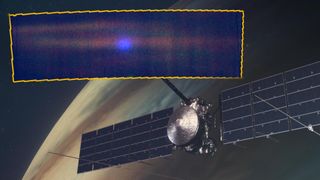
NASA eyes 3I/ATLAS with alien-hunting Clipper spacecraft in new image
By Brandon Specktor published
NASA's alien-hunting Europa Clipper spacecraft took seven hours of ultraviolet observations of interstellar comet 3I/ATLAS while both objects zoom toward Jupiter.

Comet 3I/ATLAS is getting greener and brighter as it approaches Earth
By Brandon Specktor published
New images taken with the Gemini North telescope in Hawaii confirm that the interstellar comet 3I/ATLAS has gotten brighter and greener since its close flyby of the sun in October.

New 3I/ATLAS images show the comet getting active ahead of close encounter with Earth
By Brandon Specktor published
NASA and ESA both shared new images of the interstellar comet 3I/ATLAS this week, as the agencies gear up for the mysterious object's closest approach to Earth on Dec. 19.
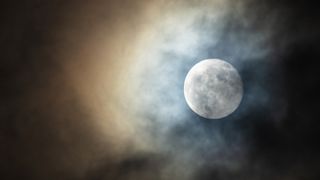
When is the next full moon?
By Jamie Carter last updated
When does the next full moon rise? Find out exactly when to see the full moons of 2025, including the full 'Cold Moon' supermoon in December.
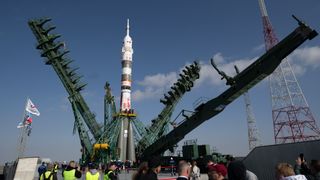
That was the week in science: Soyuz launch pad seriously damaged | 'Holy Grail' of shipwrecks | Interstellar object dangers
By Ben Turner, Alexander McNamara, Patrick Pester, Brandon Specktor last updated
Live blog Friday, Nov. 28, 2025: Your daily feed of the biggest discoveries and breakthroughs making headlines.

Watch live: New images of comet 3I/ATLAS revealed by NASA today (Nov. 19)
By Brandon Specktor last updated
NASA will finally share long-awaited images of interstellar object 3I/ATLAS taken during the comet's close flyby of Mars. A live stream has been set for today (Nov. 19).
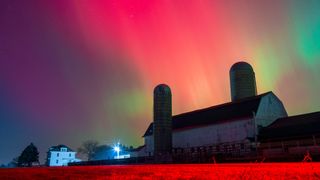
'Severe' solar storm brings auroras as far south as Florida — and more are on the way tonight
By Brandon Specktor last updated
The most powerful solar flare of 2025 has launched a ball of energy toward Earth that could trigger widespread auroras across the United States tonight.
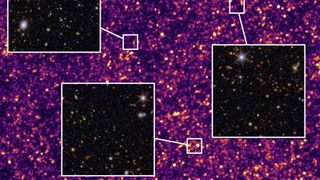
'Colder and deader from now on': Euclid telescope confirms the universe has already peaked in star formation
By Brandon Specktor published
Astronomers using data from ESA's Euclid and Herschel space telescopes have confirmed that star formation has already peaked in the cosmos, and that the universe is bound to get steadily 'colder and deader' from here on.
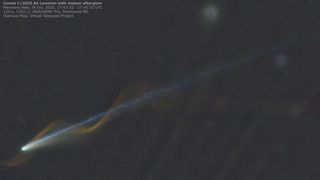
'Miracle' photo captures Comet Lemmon and meteor seemingly entwined over Earth
By Brandon Specktor published
An astronomer in Italy caught a fortuitous image of the bright comet Lemmon seemingly entwined with the glowing trail of a "shooting star."

Interstellar object 3I/ATLAS is about to get very active — Space photo of the week
By Brandon Specktor published
The interstellar comet 3I/ATLAS is barreling toward its closest point to the sun as perihelion looms on Oct. 29. How different will it look when it reappears on the other side?
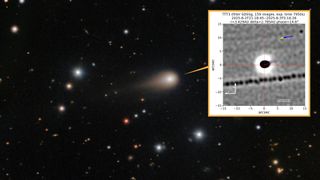
New images of interstellar object 3I/ATLAS show giant 'jet' shooting toward the sun
By Brandon Specktor published
New telescope images show that the interstellar comet 3I/ATLAS is shooting a giant jet of gas and dust toward the sun. This is normal behavior for comets, an expert told Live Science.
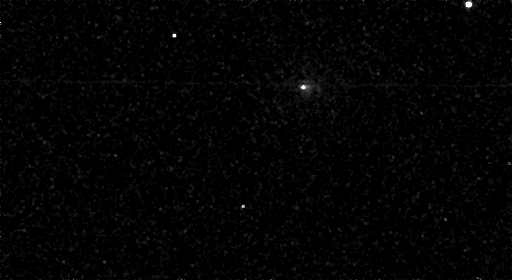
'Closest view' yet of interstellar comet 3I/ATLAS captured by Mars orbiter
By Brandon Specktor published
The European Space Agency's ExoMars orbiter has captured the closest view yet of the interstellar comet 3I/ATLAS. The images reveal the comet's bright coma but show no signs of a tail.
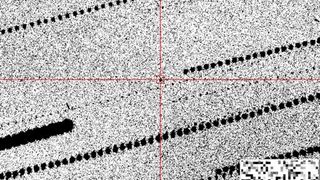
Sneaky asteroid zooms past Antarctica closer than a satellite — and astronomers didn't catch it until hours after
By Brandon Specktor published
A small, giraffe-size asteroid called 2025 TF came closer to Earth than some satellites on Wednesday (Oct. 1), stunning astronomers who first spotted it hours later.

Interstellar comet 3I/ATLAS may come from the mysterious frontier of the early Milky Way, new study hints
By Brandon Specktor published
The interstellar comet 3I/ATLAS does not come from our corner of the Milky Way, and may be a time capsule of the early galaxy, new research into its trajectory hints.
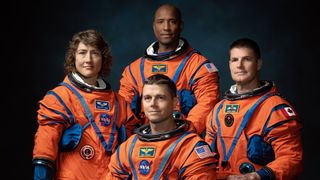
Artemis Program: NASA's plan to send humans back to the moon
By Adam Mann last updated
Basic information about the Artemis program's Space Launch System and Orion capsule.

'Shocking': Black hole found growing at 2.4 times the theoretical limit
By Brandon Specktor published
Scientists spotted an enormous black hole in the early universe that's growing at 2.4 times the theoretical Eddington limit. Studying it further could help answer one of the biggest questions in astrophysics.
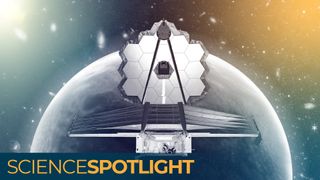
Will the James Webb telescope finally lead us to alien life?
By Brandon Specktor published
Three years into its mission, the James Webb Space Telescope has advanced the search for alien life more than any machine before it. What will it find next?
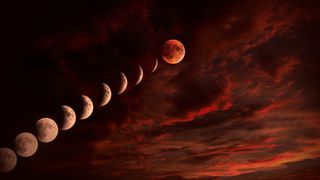
How to stream Sunday's 'blood moon' total lunar eclipse
By Brandon Specktor last updated
The final 'blood moon' total lunar eclipse of 2025 is coming this Sunday (Sept. 7-8). Here's where the celestial spectacle will be visible — and how to watch it if you're not in the path.
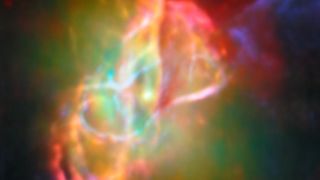
'Butterfly Nebula' spreads its wings in dazzling new James Webb telescope image
By Brandon Specktor published
In a dazzling new photo, the James Webb Space Telescope zooms in on the Butterfly Nebula — the dying gasps of one of the hottest stars in the sky, which could hold clues to Earth's origins.
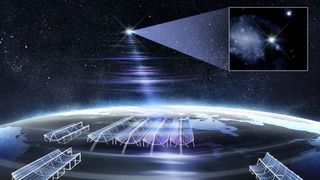
James Webb telescope pinpoints brightest FRB ever detected
By Brandon Specktor published
Astronomers using the James Webb telescope alongside Canada's CHIME telescope have pinpointed the origin of one of the brightest blasts of radio energy ever detected in Earth's skies.

Autumn equinox 2025: When does fall begin?
By Sarah Wild last updated
REFERENCE Equinoxes occur twice a year, with night and day being almost the exact same length all across the world. The next equinox is the September fall equinox, beginning on Sept. 22, 2025 in North America.
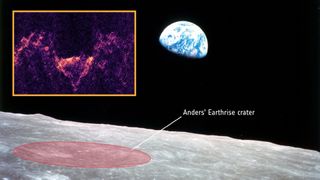
Scientists scan famous 'Earthrise' crater on mission to find alien life in our solar system
By Brandon Specktor published
A large lunar crater featured in the iconic 'Earthrise' photo has just helped the European JUICE spacecraft hone its alien-hunting instruments during a once-in-a-lifetime flyby.
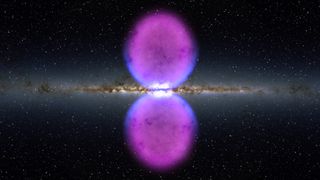
'Ice cube' clouds discovered at the galaxy's center shouldn't exist — and they hint at a recent black hole explosion
By Brandon Specktor published
Twin orbs of superhot plasma at the Milky Way's center known as the "Fermi bubbles" contain inexplicable clouds of cold hydrogen, new research reveals. They could help scientists figure out when our galaxy's black hole last erupted.
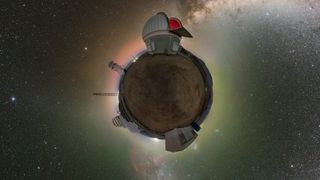
Vera C. Rubin Observatory: The groundbreaking mission to make a 10-year, time-lapse movie of the universe
By Jamie Carter last updated
Armed with the world's largest digital camera, the Vera C. Rubin Observatory in Chile will take night-sky images that revolutionize astronomy.
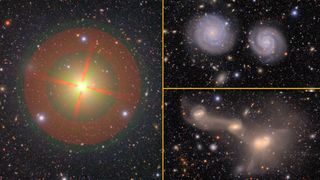
6 incredible objects hidden in Vera C. Rubin Observatory's mind-boggling first image
By Brandon Specktor published
The Vera C. Rubin Observatory's first image release includes a 'staggering' view of 10 million galaxies in and around the Virgo Cluster. Here are six stunning sights hidden throughout the mind-boggling image.
Get the world’s most fascinating discoveries delivered straight to your inbox.
